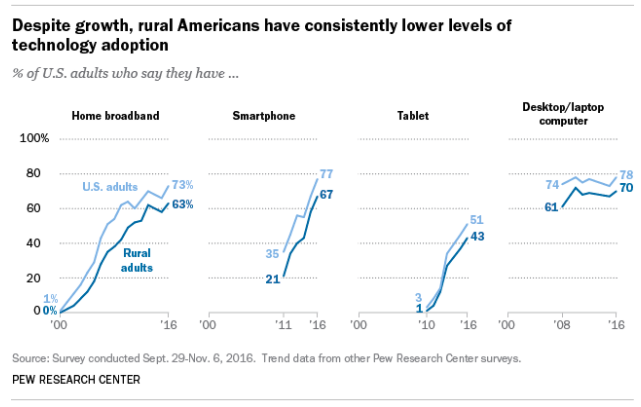By: Scott Buhr, South Carolina Physics Teacher

I was 11 years old when I got my first trumpet. My grandfather bought it for me and I was thrilled. I couldn’t wait to learn how to play it. I had taken piano lessons for several years and I can remember my 11-year-old mind thinking, “The trumpet will be so much easier, it only has three buttons!” Silly right? I was taking my knowledge of the piano and superimposing it upon a completely different type of instrument. Sure, there are some things about playing the piano and the trumpet that are alike, but treating one like the other will leave your orchestra one instrument short. My piano literacy did not translate into trumpet literacy, who’d of thought?
Now twenty years later, I am an educator who thinks about the sort of transition that I went through from piano to trumpet on a daily basis. Each hour of the school-day, students arrive in my classroom from all sorts of differing classes—each one teaching them their own literacy practices. My job as a physics teacher is to teach my students how to think like a physicist. How do physicists solve problems? How do they think about the universe? How do they talk to each other about it? This is every teacher’s task. How do I get my students thinking like the professionals in this field think?
“QUARANTEACHING”—THE STRANGE TRANSITION FROM FACE-TO-FACE, BRICK-AND-MORTAR, GOOD-OLE-FASHION SCHOOL TO THE WHAT-IN-THE-WORLD, CRAZY-LAND OF ELEARNING.
Enter Covid-19. Suddenly, every teacher has been thrust into the unknown world of “quaranteaching”—the strange transition from face-to-face, brick-and-mortar, good-ole-fashion school to the what-in-the-world, crazy-land of eLearning. This unbelievable turn of events has forced teachers to make a literacy transition of their own. From the face-to-face to the virtual. Like many educators right now, you might be struggling to transition from the face-to-face environment that you know so much about to a completely digital experience. If you, like me, found the recent upset to feel rather normal and stress-free, then you might be a digital native—someone who was brought up with today’s technology and whose use of it feels less like using a prosthetic and more like using a natural appendage. Or, perhaps you would not consider yourself a digital native, but are comfortable adopting new technologies and have been for some time. Either way, there are many people whose comfort level with using all sorts of technology is high and there are some whose comfort is low. If you are an educator reading this, you probably could go through the names of the people in your department and pick out the ones who seem to like using technology just because it exists, the ones who avoid it at all costs, and everyone in between.
Now, I find myself in the comfortable position of being a digital native as well as having been enrolled in online grad classes for some time. My wife has taught virtually for years, and I am about to begin teaching my own virtual class. Many other teachers did not have my circumstances and were faced with the daunting challenge of online teaching with about two days notice.
Here is the interesting bit. I haven’t noticed that technology integration has been the biggest hurdle for teachers. Indeed, many teachers have been surrounded by all sorts of technology for quite some time—both in and out of the classroom. No, from my perspective, the biggest struggle for many teachers hasn’t been “How does this thing (Zoom, Google Docs, etc. . . ) work?” But instead, “How do I put it all together to work for me and my students?” “How should it work?”
The biggest struggle for many teachers is not “How does this thing work?”, but instead “How should this thing work?”
Let me explain:
I have seen many teachers share their plans of how they are going to replicate their classroom experience online. This includes bell work, short lectures, and even the possibility of taking tests online. These plans seem to elicit “oohs” and “aahs” for their elaborateness and are applauded for the fact that this teacher has created something so close to a brick and mortar classroom experience. Now don’t get me wrong, context is everything and there may be scenarios where any one of those strategies is really the best one for that particular age, class, or context. As a digital native though, here’s my two cents:
Is replicating the brick-and-mortar experience the best way to provide eLearning?
It is likely that your teacher-education program took a traditional approach to lesson planning and unit planning that involves students working linearly through materials as you guide them. This form very much fits the context of students who enter my classroom at the same time each weekday, stay about an hour, and leave with whatever, if anything, I have tasked them to do at home. Still doesn’t mean it is the best, but it certainly fits the context. Now, does a traditional lesson plan seem to fit our current context? Any online context?

Perhaps the nuts and bolts of the eLearning technology is really not the biggest issue. Maybe our approach to teaching in this sort of environment is what needs the most attention. Most online courses that I have taken have offered me less direct instruction and more opportunities to create things based upon research I have set out to accomplish with resources that the instructor has provided. That is, I have taught myself for the most part and then created some sort of product based upon my learning. Sometimes this has worked really well and other times it hasn’t.
The thing that has made this model the most successful is how the teacher approaches the class. If they take a “set it and forget it” approach, I am almost sure to be frustrated and unsure of what I am supposed to be doing. If, however, my first attempts on projects are met with specific, helpful feedback, then I am sure to thoroughly engage with the class.
Educational technologists have long towed the line that technology is a tool, but today it seems that the technology is more a context or environment than merely a tool.
So did you catch the key? Feedback. In my face-to-face classes, I provide this in a thousand small ways. Verbal feedback, facial expressions, and body language are paired with my planned materials to facilitate my being able to accurately gauge and respond to student understanding. Without those tools in an eLearning environment, my students will experience the same frustration that I had from my own online teachers who seemed to treat the courses I was in like an automated machine. In an online environment, many excellent teachers likely struggle to provide the incredible feedback that they normally would when working face-to-face. Could it be that the pressure to make eLearning look and feel like a traditional classroom is the wrong approach? Educational technologists have long towed the line that technology is a tool, but today it seems that the technology is more a context or environment than merely a tool. If my students are primarily engaging with me and my course through hardware and software, then hasn’t that repositioned the technology to more than just a tool? In fact, it becomes a whole different social discourse in which the ways we act, think, and communicate are quite foreign from the space of the traditional classroom. The literacy paradigm has changed. We’re not in Kansas anymore, Toto.
Personally I have faced this challenge with my honors physics students. I introduced them to a new online tool called MasteringPhysics as a part of my doctoral work. This platform provides immediate and elaborated feedback to my students, but many of them still struggled to connect with this feedback. This program is specifically designed to use a host of technological magic to give electronic feedback to students and yet they still struggle. How much harder it must be for new eLearning teachers to adjust to this new paradigm.
Hopefully, educators all across the country will begin to pressure themselves into designing online lessons rather than teaching lessons online.
Reshaping your thinking isn’t easy. Even as a digital native, I have found myself trying to force my prior learning experiences as a student onto my current classes. It just feels “right” sometimes. My 11-year-old self had to learn to treat the trumpet as a completely different instrument complete with all new ways of thinking about music. It could well be that teachers who have been thrust into eLearning need the same kind of adjustment in their thinking. So have you felt pressure as a teacher to replicate face-to-face style learning in the virtual world? Was this pressure internal or external? Hopefully, educators all across the country will come out of quarantine with a fresh perspective of the advantages and disadvantages of eLearning and begin to pressure themselves into designing online learning using online literacies rather than teaching lessons online. This is going to require New Literacy Studies.
About the Author

Scott Buhr is a high school physics teacher in Simpsonville, SC. He is a doctoral candidate at the U of SC College of Education studying Curriculum and Instruction. He has been involved with physics instruction, instructional design, and public speaking for nearly a decade. He was named in the Top Ten Teachers of the Year for Greenville County Schools in 2017-18 and shortly thereafter led his physics class to break a Guinness World Record. Scott also operates a small, gourmet popcorn business and actively ministers with his wife in their local church.



